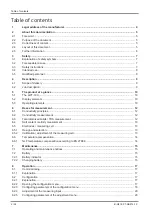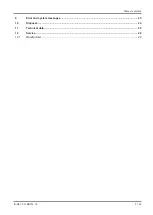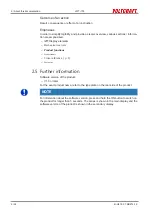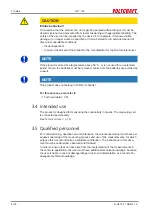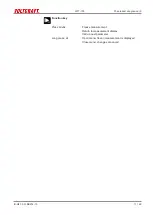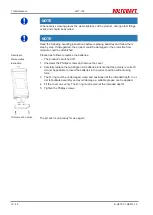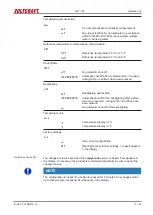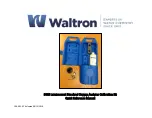
LWT-100
Bases for measurement | 6
B-H87.0.01.DB214-1.0
13 / 26
place with calibration to known comparison solutions or with actual evaporation of a
certain amount of liquid with measured conductivity and subsequent weight of the total
dissolved solids.
6.4 Salt content / salinity measurement
In
SAL
measuring mode, the salinity, which is the salt content of sea water, is determ-
ined. The basis for this is the International Oceanographic Tables, IOT. Standard salt
water has a salinity of 35 ‰, 35 g of salt per 1 kg of sea water. The display in % [g/kg]
normally does not show units. The designation PSU, Practical Salinity Unit, is also
commonly used; the display value is identical. The salinity measurement has temper-
ature compensation, which means the temperature is considered for the display and
has a major influence on the display value; any menu settings regarding temperature
compensation are ignored.
NOTE
The salt composition of different seas is not identical. Depending on the location,
weather, seasons, etc., there are considerable deviations from the 35 ‰ according to
the IOT. The salt composition can also influence the relationship of the salinity display
and the actual amount of salt present.
Corresponding tables are available for many salts in salt water aquarium applications.
Salt weight to salinity according to the IOT or conductivity. In consideration of these
tables, very precise salinity measurements can be conducted.
6.5 Electrodes / measuring cell
6.5.1 Design and selection
There are basically two different types of measuring cells: 2-pole and 4-pole measur-
ing cells. Control and/or evaluation take place in a similar manner; the 4-pole measur-
ing cells can compensate well for polarisation effects and contamination to a certain
degree with the more elaborate measuring processes.
The product is equipped with a permanently connected 2-pole measuring cell.
2-pole measuring cell
4-pole measuring cell
6.5.2 Calibration / adjustment of the measuring cell
In harsh applications and due to ageing processes, the cell constant of measuring
cells changes. Depending on the application and precision requirement, the overall
precision of the display device and measuring cell measuring chain should be checked
regularly. Special testing and calibration solutions, such as GKL 100, 101 and 102 are


